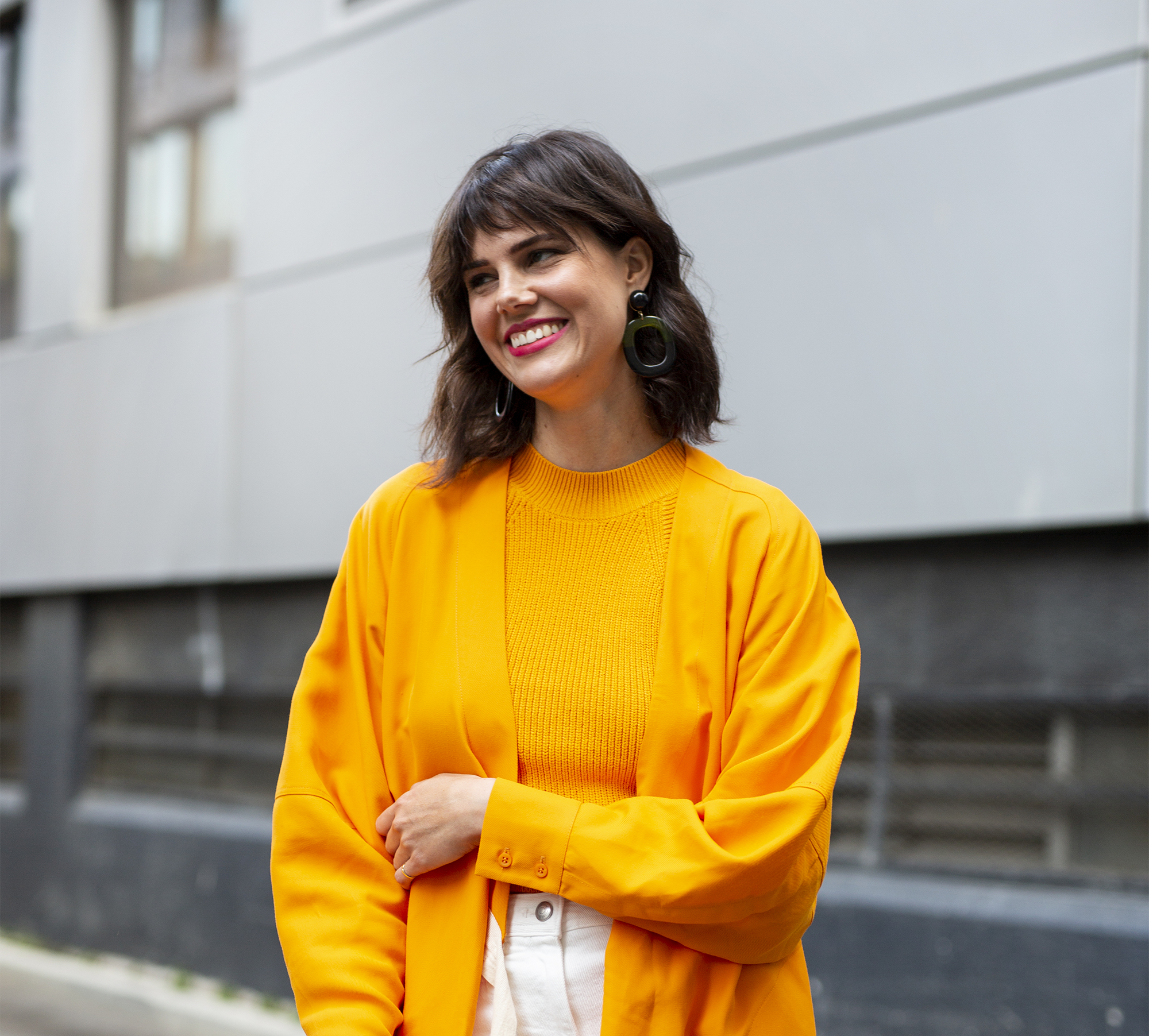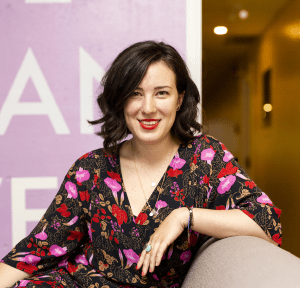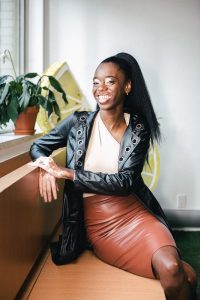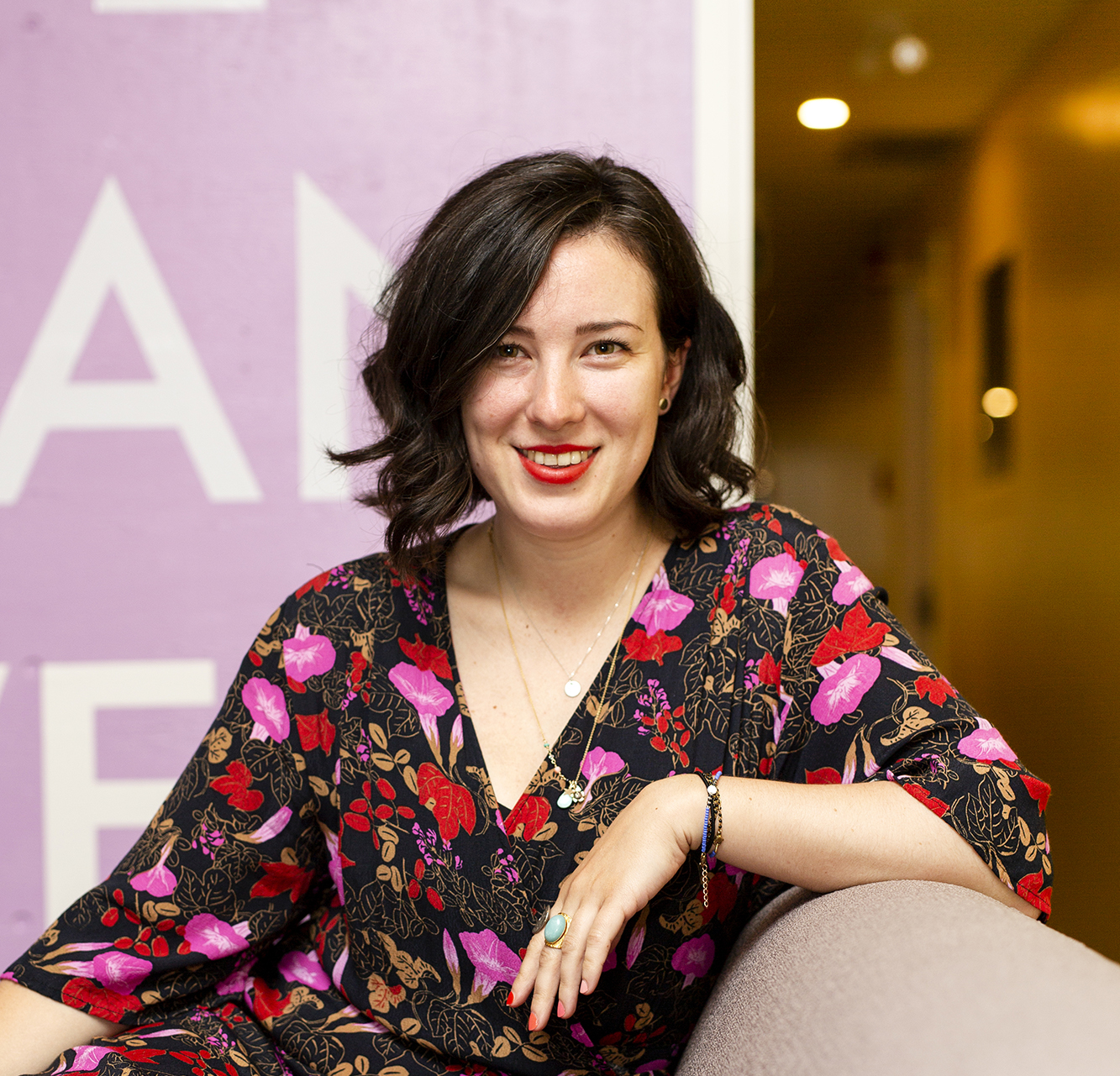[vc_row full_width=”stretch_row” full_height=”yes” parallax=”content-moving” parallax_image=”14708″ parallax_speed_bg=”1″][vc_column][vc_empty_space height=”550px”][/vc_column][/vc_row][vc_row][vc_column][vc_column_text]
In partnership with Facebook Canada, we spoke to eight incredible women entrepreneurs (ranging from a prosthetic fashion designer to a fintech founder) in our She Means Business video series about the challenges women in business face and their journey to success. Visit BSBTV to see more.
[/vc_column_text][vc_custom_heading text=”— McCauley Wanner —
” font_container=”tag:h2|font_size:30|text_align:center|color:%232d81be” css_animation=”fadeInLeft” css=”.vc_custom_1573850793013{background-color: #fcd437 !important;}”][/vc_column][/vc_row][vc_row][vc_column width=”1/2″][vc_custom_heading text=”President, ALLELES Design Studio
” font_container=”tag:h2|font_size:22|text_align:left|color:%232d81be” css_animation=”none”][vc_empty_space][vc_column_text]Fashion can at times seem frivolous however McCauley Wanner wanted to change that narrative, proving that design can be both functional and stylish. The president and co-founder of ALLELES — a BC-based company specializing in uniquely designed prosthetic covers — realized the medical industry’s failure to address a simple fact: everyone deserves to express themselves. By looking at prosthetics through the lens of fashion and design, Wanner has created a product that is no longer defined by its utility but rather is a statement and extension of one’s personal style. [/vc_column_text][/vc_column][vc_column width=”1/2″][vc_custom_heading text=”VIDEO FILMED BY DANA LAVOIE
PHOTOS BY ELAINE FANCY” font_container=”tag:h2|font_size:10|text_align:right” google_fonts=”font_family:Dosis%3A200%2C300%2Cregular%2C500%2C600%2C700%2C800|font_style:400%20regular%3A400%3Anormal”][vc_single_image image=”14725″ img_size=”full”][/vc_column][/vc_row][vc_row][vc_column][vc_custom_heading text=”What was the inspiration behind ALLELES and prosthetics in general?” font_container=”tag:h2|font_size:20|text_align:left|color:%23fdda40″][vc_column_text]For us, we don’t really align ourselves with prosthetics. [We] think that we’re more of a fashion design company that have this product that’s in prosthetics. It stemmed from my master’s thesis of industrial design. Ten years ago, I was pitching this as a proposal for my project. My committee [said to me], “How could you ever pair something so frivolous as fashion with something as sensitive as disabilities?” And that is actually the entire point. That attitude is the whole problem. People with disabilities don’t get the chance to express themselves and have options. I thought [ALLELES] was a tool that could be used for so much good. There’s nothing frivolous about self-expression and about making people feel like themselves. [/vc_column_text][vc_custom_heading text=”How has social media helped change the narrative?” font_container=”tag:h2|font_size:20|text_align:left|color:%23cf8596″][vc_column_text]I think the thing that’s really cool about [social media] is that we have all these people with different points of view that didn’t have a voice before. There are different body types, abilities, ethnicities—you name it. Now the fashion industry has to listen and respond. It’s amazing what has happened to huge brands in terms of representation. A few years ago, there were 10 amputees on the runway. We take it for granted now, but that is extraordinarily new.[/vc_column_text][vc_custom_heading text=”How can we help break stigma around differences?” font_container=”tag:h2|font_size:20|text_align:left|color:%23fdda40″][vc_column_text]We have a very niche product and a very specific clientele. [It’s important to] carve out these communities to show that there are many different body types out there, not only for shifting the fashion industry but just the way the mainstream perceives people that look or seem different. One in five people have a disability, but I think the ratio is actually higher than that. Yet we think that these people aren’t mainstream and the niche, when in reality the niche is actually these six-foot-tall-size-zero people. [/vc_column_text][/vc_column][/vc_row][vc_row][vc_column width=”1/2″][vc_single_image image=”14735″ img_size=”full”][/vc_column][vc_column width=”1/2″][vc_custom_heading text=”How do you feel connected to your community?” font_container=”tag:h2|font_size:20|text_align:left|color:%23cf8596″][vc_column_text]That’s the power of social media. Without Instagram, without Facebook, none of this would’ve been possible. People have had this idea before I’m sure, but there was nowhere for them to find each other. There was no place for them to congregate and share things and there was no platform for people to buy stuff. [Now we get] emails saying, “I’ve been an amputee for 20 years, this is the first time I’ve ever worn shorts. I’m not afraid to leave my house anymore, strangers on the street treat me differently now.” We have all these virtual relationships with our clients. It’s this really weird situation that we’re in where you have this deep connection to people that you’ve never met. It is an extraordinarily tight-knit community. People are on the page cheering each other on.
[/vc_column_text][/vc_column][/vc_row][vc_row full_width=”stretch_row_content” full_height=”yes” video_bg=”yes” video_bg_url=”https://www.youtube.com/watch?v=s8Wp2Hzu-lU&t=8s”][vc_column][/vc_column][/vc_row]











